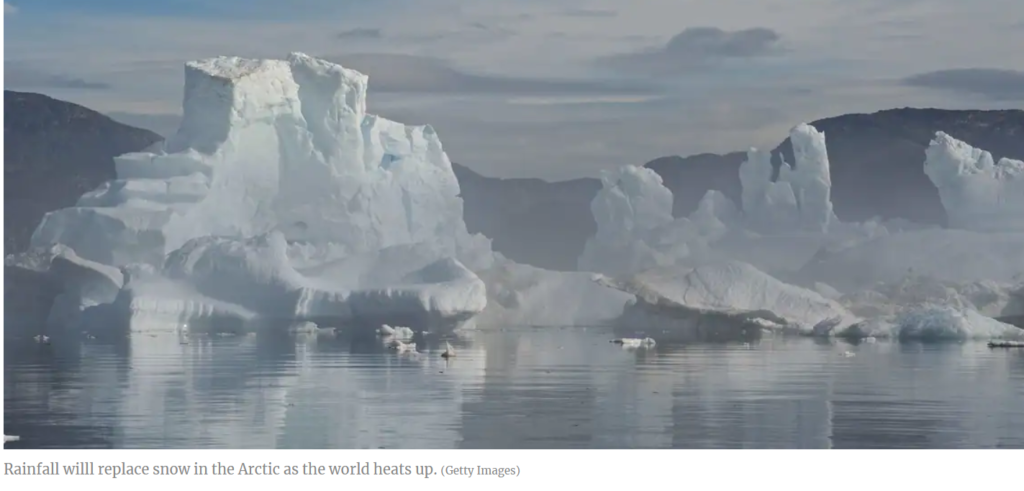New research has found that rainfall will be more widespread in the Arctic by 2100 if climate change isn’t checked. This will have huge implications for the planet.
Probably the most important environment on Earth with regards to gauging the impacts of climate change is the Arctic. It is the region where the effects of warming, due to human carbon emissions, is the most pronounced. Changes in the Arctic, which hare happening at a rapid pace, give us an idea of just how critical it is that we act on climate right now.
This was reinforced by a new study that found that if the world stays on its current emissions path, the Arctic will warm so much by the end of the century that it will receive more rain than snow. The study, New Climate Models Reveal Faster And Larger Increases In Arctic Precipitation Than Previously Projected, was published in Nature Communications on 30 November. The study was conducted by an international team of researchers led by Michelle McCrystall of the University of Manitoba’s Centre for Earth Observation Science.
The study found that rain will replace snow as the Arctic’s most common form of precipitation by 2100 if the world heats up by 3 degree Celsius above pre-industrial levels. Right now, the world has heated up by 1.1 degree Celsius. If countries succeed in implementing their current climate action pledges, the world will still heat up by a catastrophic 2.4 degree Celsius. The current aim of global climate action is to limit warming to a more manageable 1.5 degree rise, but even that might not be good enough for the Arctic.
There was widespread consternation among scientists when, instead of snowfall, rain fell on the Greenland ice sheet in August this year. This was such an unprecedented event that scientists didn’t even have any proper gauges to measure the rainfall. The new study confirms that this switch from snow to rain is occurring due to rapid warming, loss of sea-ice and the transport of greater heat towards the poles. This has grave implications for the rest of the planet as well. “There are huge ramifications of these changes, which we note in the paper, such as a reduction of snow cover, increased permafrost melt, more rain-on-snow events, and greater flooding events from increased river discharge, all of which have implications on wildlife populations and human livelihoods,” said McCrystall.
Article Credit: lifestyle.livemint
